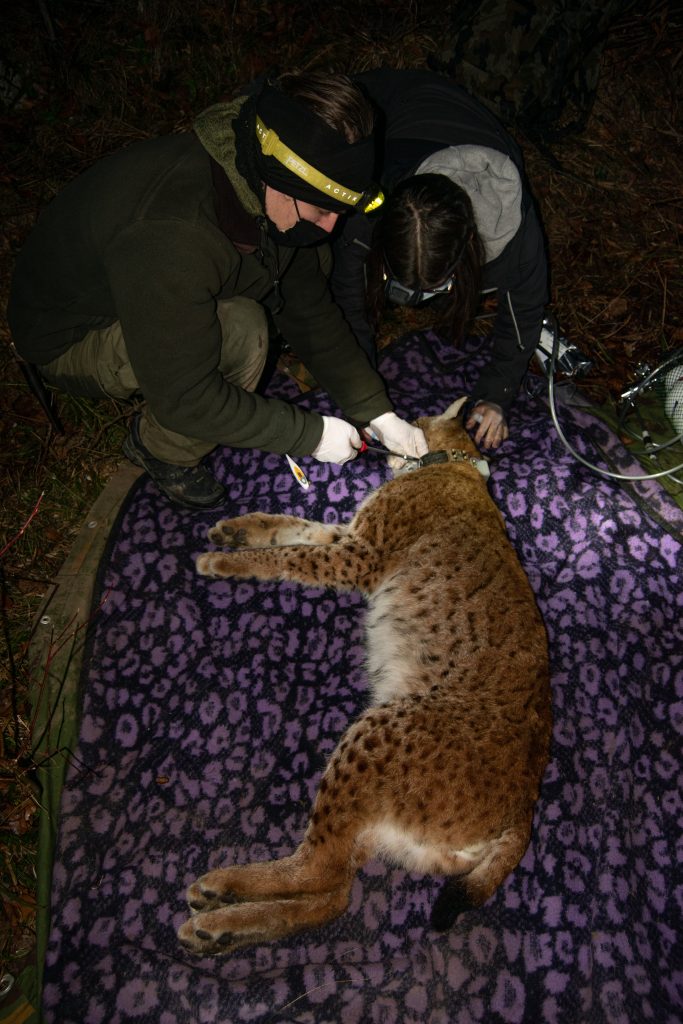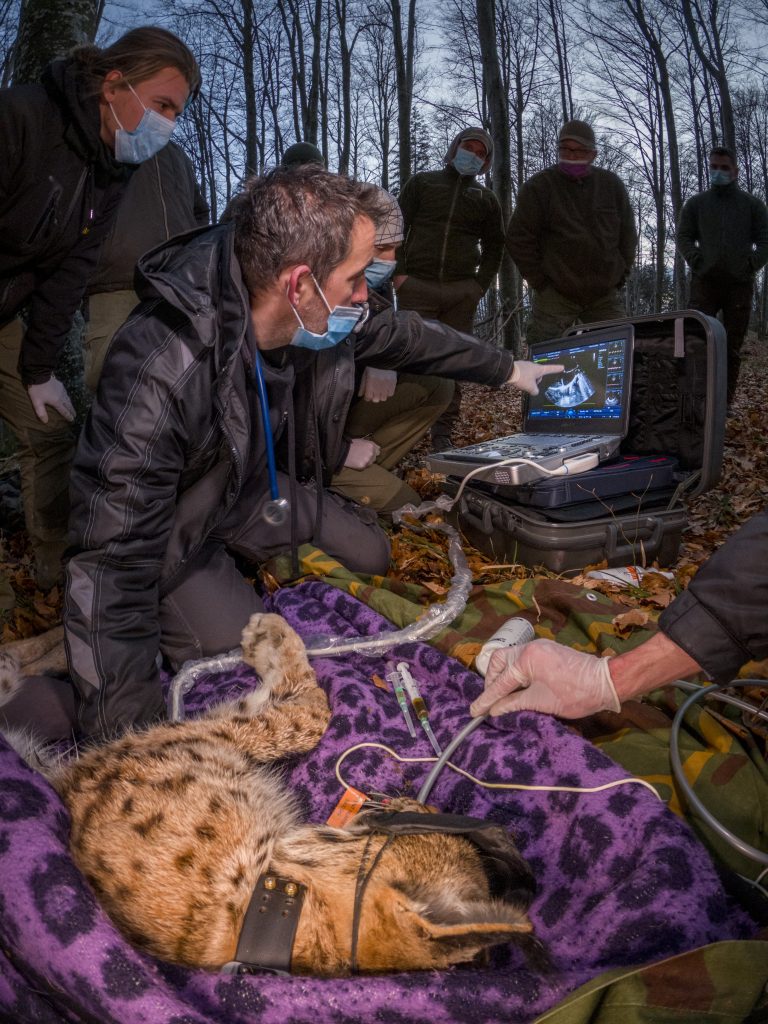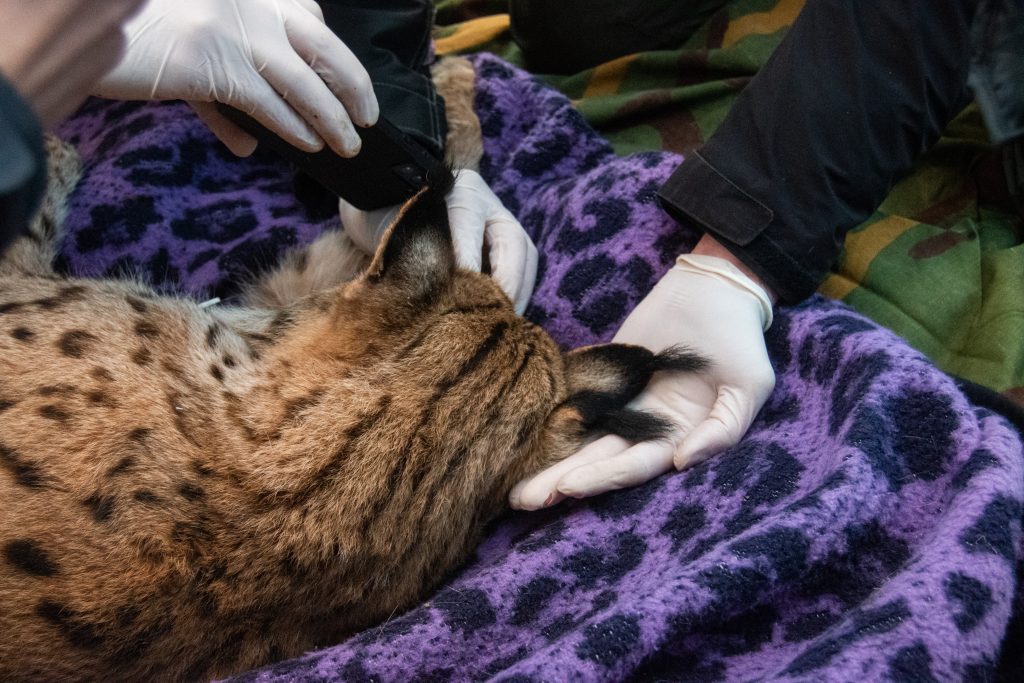Last week, Slovenian LIFE Lynx project team managed to equip another two lynxes with new telemetry collars in Slovenian Dinaric Mountains. One of them was lynx Catalin, who was translocated from Romania and released in Snežnik forests back in 2020. He was already equipped with a collar but batteries on it would drain soon, therefore we replaced it with a new collar, which will enable us to prolong tracking of his movements and integration into the Dinaric lynx population. Catalin, who is now 6-7 years old, was in good shape at the time of the capture and he weighed 25 kg, which is one more kilogram than at the time of the release in 2020.

Changing lynx Catalin’s collar. Photo: Ruben Portas
Catalin established his territory on Menišija and Rakitna plateau, however, he frequently also crosses Iška River and makes excursions to Mokrc area. This region is controlled by another territorial male, which we also managed to capture and collar these days. This neighbor from the remnant population was named Igi after the town of Ig, close to which he was captured. Igi has a very specific feature- he has two tufts on one ear, which might be a consequence of inbreeding. While Igi was sedated, the veterinarian thoroughly checked him with a portable ultrasound and noticed that he has heart deformations, which were now detected already in three remnant lynx. This data confirms in how bad shape our remaining Dinaric population really is and the necessity to help them reduce inbreeding levels by translocating unrelated lynx, like Catalin, from the Carpathian population.

Veterinary examination of lynx Igi with a portable ultrasound. Photo: Janez Tarman

Igi’s specific feature – two tufts on one ear. Photo: Maj Hočevar
Igi recovered well from the anesthesia and he is moving normally since the capture, which indicates that despite the heart murmur, he is in fine condition. Now having two neighbor territorial males on telemetry collars, we will be able to monitor interactions between the two in detail, as well as to compare behavior between the healthy Carpathian male and the local one with inbreeding problems.

View from Mokrc (Igi’s territory) towards Menišija (Catalin’s territory). Photo: Maja Sever, LIFE Lynx
Especially now, during mating season it will be also interesting to see if the males will be bolder and enter each other’s territories more often as usual. Each of the males has one resident female within his territory, and both females had kittens last year. Female on Menišija, called Katarina, most likely had kittens with Catalin as one of the cubs has a same type of the coat pattern as he has, while we are not sure about the fatherhood of the kittens from Mokrc.
Both lynx captures were led by experts from the Department for Forestry at Biotechnical faculty and ZOO Ljubljana, with assistance by local hunters and Slovenia Forest Service.
